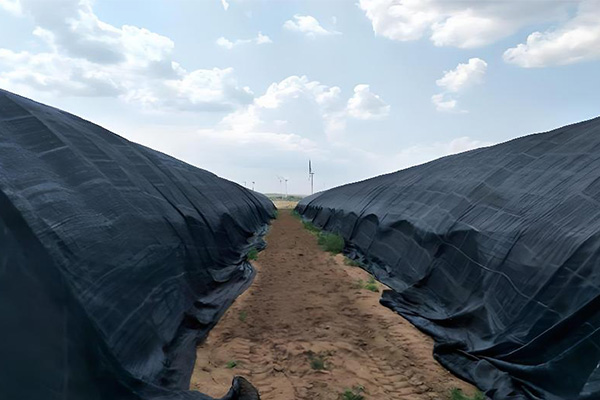As summer approaches, the polytunnel turns into a sealed steamer. The temperature inside rises rapidly. Vegetables get sunburned, leaves droop, and yields drop sharply. Despite investing time and effort, many growers often struggle to deal with this high-heat challenge.
At this point, though it seems like a simple fix, polytunnel shade netting becomes the key solution. Installing a shade net helps block sunlight, lowers the temperature, and reduces the risk of diseases. On top of that, it can significantly improve the quality and yield of crops, all at a relatively low cost and with a short payback period.
As a Chinese factory with over 30 years of experience in shade net wholesale, INSONSHADE will walk you through the practical aspects—whether you need a shade net, how to install it, which type to choose, and what price is reasonable.
What Is Polytunnel Shade Netting, and Why Should You Use It?
Polytunnel shade netting is a type of fabric that protects your greenhouse from strong sunlight. It lowers internal temperatures and maintains a better environment for plant growth. During the intense heat of summer, it works like a “sun-protection suit” for your polytunnel. It improves the microclimate inside the tunnel, creating a more favorable environment where crops can thrive.
Its core benefits come down to two main points:
- First, it blocks direct sunlight and cools down the temperature inside the tunnel. It can often reduce the internal temperature by 5–10°C, easing the stress and burn damage caused by extreme heat.
- Second, it protects crops. Filtering sunlight intensity helps regulate plant transpiration, reduces sunburn, and extends the harvest period. This ultimately improves planting efficiency and yield.
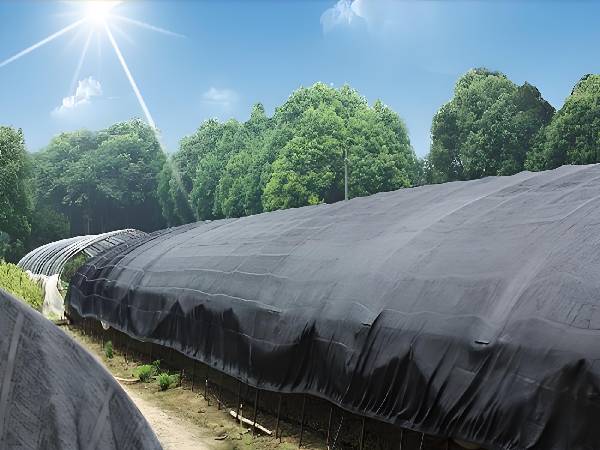
The shade net can block intense sunlight.
In real-life farming, shade nets play a vital role across different scenarios.
For example:
- Growers planting fruiting vegetables like tomatoes, peppers, or cucumbers use shading to prevent heat-related issues such as flower deformation, fruit drop, and misshapen produce.
- In nurseries, shade nets help prevent “seedling wither” caused by direct sun and high temperatures.
- Orchard managers who grow fruits like strawberries and grapes also benefit from this. Shade nets help smooth the surface of the fruit, prevent cracking, reduce sunburn, and increase the percentage of marketable produce.
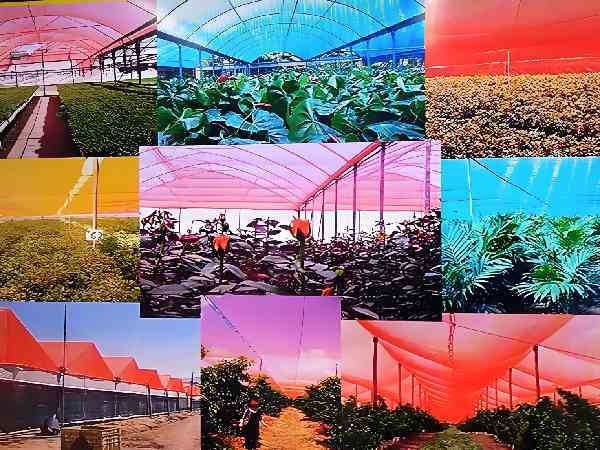
Different-colored shade nets have an impact on crops
Many growers have shared that after installing shade nets, their crops become more stable, pests and diseases are less frequent, and the overall quality of the harvest improves. Moreover, research and experience show that different net colors—like black, green, or silver-gray—affect crop photosynthesis and final yields in other ways. These positive results come from the scientific temperature management and precise light control that shade nets provide.
Do You Need to Use Polytunnel Shade Netting?
A simple rule of thumb: installing a shade net is almost essential if the daytime temperature inside your polytunnel often goes above 35°C. Once it exceeds this level, most vegetables and fruit trees will show signs of wilting, growth stagnation, and fruit burn. Many growers facing these issues may assume the problem lies in “insufficient watering” or “not enough fertilizer,” but the real cause is often overlooked—too much sun.
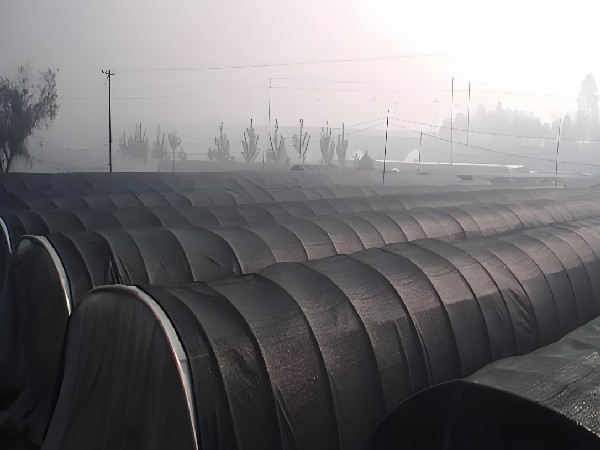
Large-scale poly farming using shade nets
Besides temperature, another key factor is how sensitive your crops are to sunlight.
For instance:
- Tomatoes, peppers, and cucumbers are especially vulnerable during flowering and fruit-setting. Strong sunlight combined with high heat can reduce fruit set rates and deform the fruit.
- Leafy greens like lettuce and spinach may develop yellowed leaf edges, bolt prematurely, and taste bitter.
- Flowers and strawberries are susceptible to heat. Once sunburned, they rarely recover fully.
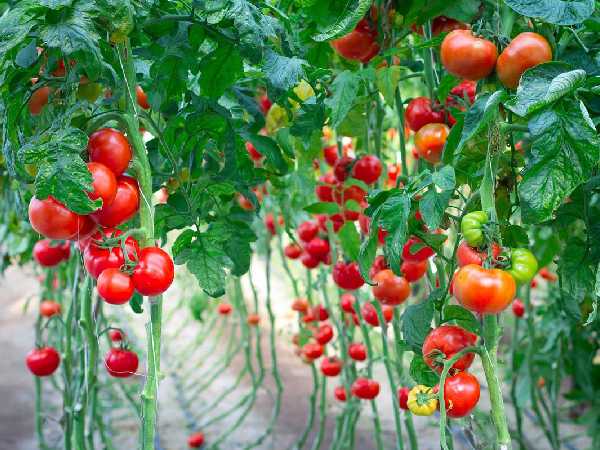
A bountiful harvest of tomatoes in the polytunnel
How to Choose Polytunnel Shade Netting?
Now that you understand how vital shade netting can be, the next step is choosing the right one. This part will guide you through selection based on four major factors: shading rate, material, color, and price.
1. Shading Rate
Choosing the correct shading rate matches your crop’s light needs with your local sunlight intensity. Plants may grow too fast and become weak if the shade is too heavy. If it’s too light, it may not reduce the temperature enough.
Generally, a 30%–50 % shading rate is excellent for most vegetables and fruit trees. It helps reduce temperature without seriously affecting photosynthesis. Shade nets with 70% or higher shading work better in flower nurseries or very hot climates, where stronger protection is needed from direct sunlight.
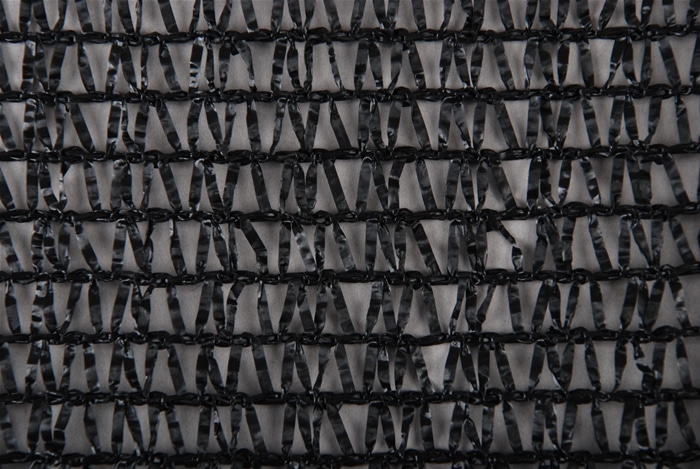
50% black shade cloth
2. Material
Most shade nets are made from PP, PE, or HDPE (High-Density Polyethylene). Among these, HDPE is now the most popular option due to its superior resistance to aging, strong tensile strength, and better weather tolerance.
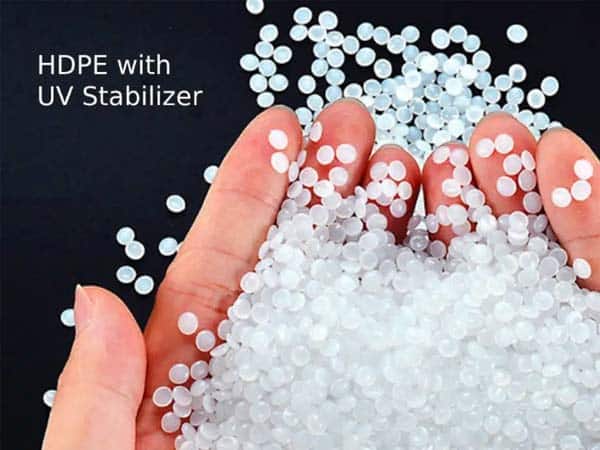
INSONSHADE HDPE Shade Net Material
High-quality HDPE shade nets:
- Include UV stabilizers and anti-aging additives
- Typically lasts 3–5 years
- They are ideal for all-year-round use
In contrast, some low-cost nets:
- They are made with recycled materials
- Often lack proper UV protection
- May become brittle, fade, or tear under strong sun and rough weather
In the long run, those cheaper options cost more due to frequent replacement. So, always check product details and look for terms like “UV-stabilized” or “anti-aging treated.”
3. Color
The color of your shade net can influence how much light it blocks, how much heat it absorbs, and how it affects your crop’s growth cycle. For most growers, black or green nets are the standard go-to choices. And other colors are used based on specific growing needs. Here’s a quick comparison of different colors, assuming the same shading rate:
| Color | Shading Strength | Heat Absorption | Light Regulation | Best Use Scenarios | Notes |
| Black | Strongest | High heat absorption | Mainly blocks light | Hot climates, vegetable & fruit crops | Cools fast, but with large temp swings |
| Green | Medium | Medium heat absorption | Softer, diffused light | Garden greenhouses, ornamental & horticultural crops | Easy on the eyes; suitable for extended work periods |
| Silver-gray/White | Medium | Low (reflects heat) | Distributes light evenly | Uneven-light greenhouses, flowers | Slows the temperature rise; remarkable for light-sensitive plants |
| Blue/Red | Weak to medium | Depends on material | Changes the light spectrum | Specialty crops, experimental setups | Often used with artificial lighting or specific trials |
4. Price
Price is always a key consideration, mainly when covering large areas or planning for long-term use. So, how much should you spend on polytunnel shade netting to get the best value?
A. Factors Affecting the Price
The cost of a shade net depends on more than just its size. Key price factors include:
- Raw materials
- Shading rate
- UV protection level
- Installation accessories (like clips and ropes)
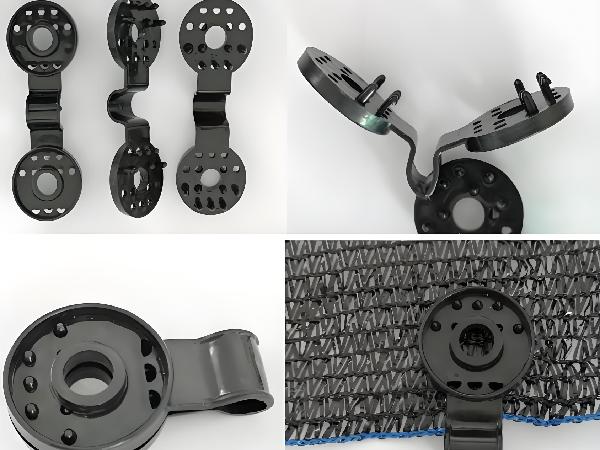
Shade net clips
For example, materials and additives directly affect durability and resistance to weather. Products with anti-UV agents and stabilizers might cost more, but they last longer under strong sunlight and reduce aging.
Some nets that initially seem inexpensive may not have the necessary installation items. Labor costs can add up if you aren’t confident in a DIY setup.
Before purchasing, ask the seller:
- “Does the price include accessories?”
- “Is an installation plan provided?”
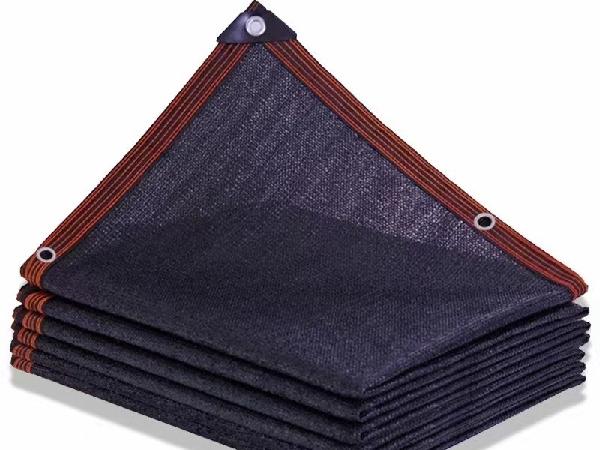
The unit price of small, single-piece nets with clips is higher
B. Reference Price Range of Shade Nets
To give you a clearer idea, let’s take an example of a 6×10 ft black shade net with a 50% shading rate. Based on actual sales data from Amazon (U.S. region):
- Low-end price: around $6.99 (usually during sales or from niche brands)
- Typical range: between $8.99 and $12.99, depending on brand, fabric quality, edge reinforcement, and included accessories
- High-end versions: may go over $15 if they come with features like metal eyelets, double-stitched edges, or thicker materials
Of course, prices may vary significantly between countries, depending on local production costs and market demand. And if you’re planning to buy in bulk, the unit price will drop significantly.
Other Procurement Suggestions
When choosing polytunnel shade nets, it’s important to tailor your decision based on your farming scale, usage frequency, and budget.
- For small growers or first-time users, starting with 50- or 100-meter rolls is a practical way to test performance without heavy investment.
- Buying full rolls is more cost-effective for commercial farms, greenhouse projects, or long-term use. It lowers the unit price and improves both shipping and installation efficiency.
Regardless of your scale, always look for nets with a UV-protective coating. These are more resistant to aging caused by long-term sun exposure. Over time, this helps you avoid frequent replacements and lowers the average maintenance cost.
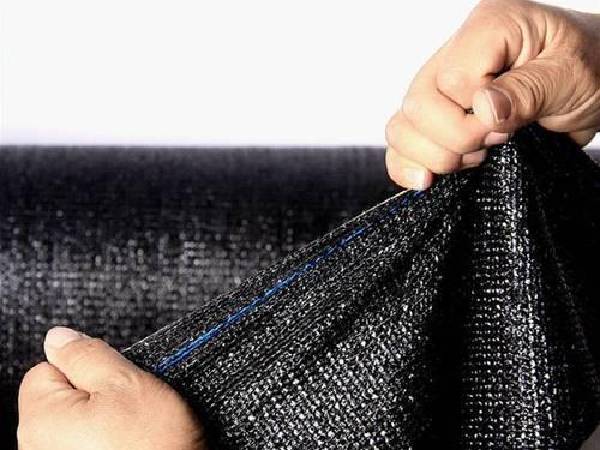
A shade net with UV protection and tear resistance can truly reduce costs
For customers needing large-volume orders, INSONSHADE offers highly competitive solutions. We specialize in mass-producing agricultural shade nets, with customization options in size, shading rate, color, etc.
Our factory is located on China’s coast, allowing fast global shipping. For orders starting from 5 tons, we offer OEM/ODM services and free samples to support your project planning and decision-making.
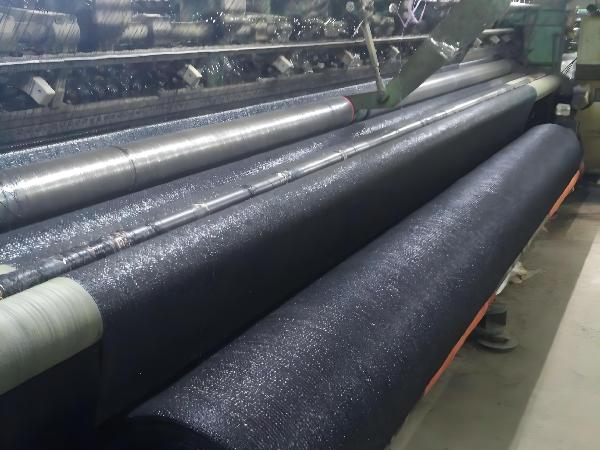
Shade nets are being produced
Which Installation Method Should You Choose?
There are three common ways to install polytunnel shade nets: external hanging, internal hanging, and a sliding-rail retractable system. The first two methods are the most popular among growers. The sliding-rail system is generally used in large commercial or intelligent greenhouses. Due to its higher cost and complex structure, it’s rarely used for simple polytunnel setups so we won’t cover it in detail here.
For most users, external and internal hanging methods offer a practical balance of cost and performance.
1. External Hanging
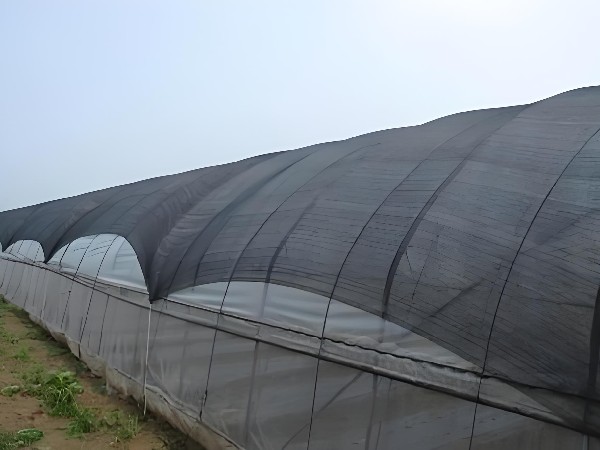
Externally hung shade net
The external hanging method provides the most substantial cooling effect, blocking sunlight before it enters the tunnel. This significantly lowers the internal temperature. However, it’s more likely to get damaged because it’s exposed to wind, rain, and sun. It usually requires extra reinforcement with ropes and clips.
2, Internal Hanging
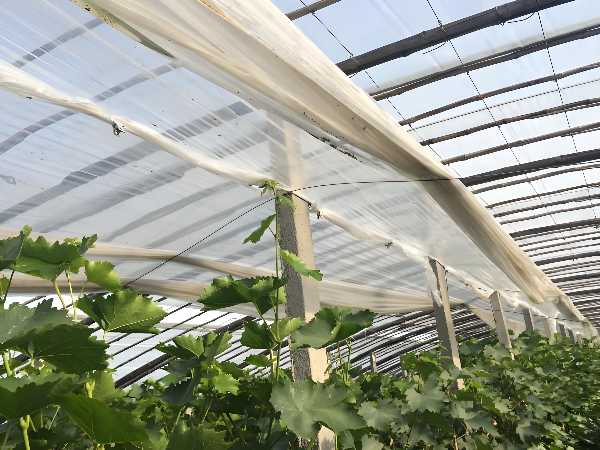
Internally hung white shade net in the polytunnel
The internal hanging method installs the net inside the polytunnel. It filters sunlight after it enters, reducing glare and protecting crop leaves from burns. Although its cooling effect is slightly weaker, the internal setup is more durable and better suited for small to mid-sized greenhouses.
3, Shading System
If you’re planning to install or maintain the shading system yourself, prepare some basic tools like elastic ropes, metal clips, plastic fasteners, or even a simple rail system. These accessories will help secure the netting to a steel or bamboo frame and make future removal or adjustments easier.
In windy areas, adding more fixing points with elastic ropes and increasing the number of clips along the edges is crucial. This will prevent the net from being lifted, flapping, or tearing. Also, choosing UV-resistant fasteners can extend the lifespan of the entire system.
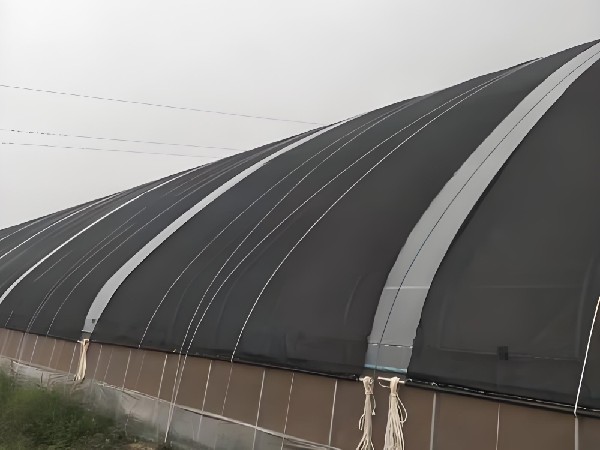
Reinforced shade net
Conclusion
For most polytunnel users, investing in a shade net is a low-cost, high-return decision. It effectively addresses the high-temperature problem inside the greenhouse, shields crops from intense sunlight, and dramatically improves overall crop quality and yield. Instead of waiting until your plants start wilting, burning, or ripening too early, planning ahead is better. Choosing the right shade solution early can help you save labor, time, and costs in the long run.
INSONSHADE offers customized shade net products with a wide range of options, including shading rates, colors, sizes, etc. These options fit various polytunnel needs, from small gardens to large-scale agricultural projects. We support bulk purchases, deliver fast, and offer complete OEM customization services. If you’re looking for a stable, professional, and reliable shade solution, we’re here to help you protect your crops smartly.
